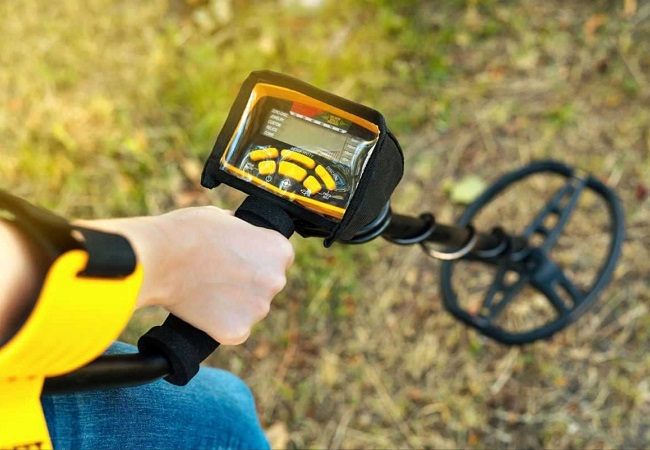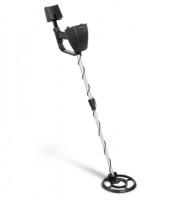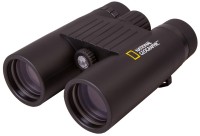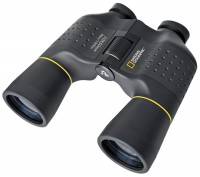BRESSER National Geographic 9110500
 | Outdated Product £32.99 Type: metal detector; Suitable for: ground; Principle of operation: VLF; Shape: round; Waterproof; Number of detection frequencies: 1; Max. detection depth (cm): 50; Coin detection depth (cm): 15; flashlight; Power source: PP3 x1; Max. operating time (h): 12; Weight (kg): 0.46; |
BRESSER National Geographic 9110500
Type:ground
Principle of operation:VLF
Coil:round
Number of frequencies:1 pcs
Depth of detection:before 50 cm
Coin detection depth:before 15 cm
Rod length:65 – 83 cm
Weight:0.46 kg
High resolution full frame sensor. 5655-point AF system with sensitivity down to -6 EV. Confident work at high ISO. Information screen on the top.
No matrix stabilization. Shooting 4K with a maximum bitrate of 480 Mbps at 24 fps and 120 Mbps at 30 fps.

Q&A: 10 frequently asked questions about metal detectorsAnswers to common user questions about metal detectors

Treasure hunt: how to choose a metal detectorPractical advices on choosing a metal detector for beginners
All specifications
Specifications National Geographic 9110500
|
| |||||||||||||||||||||||||||||||||||||||||||||||||||||||

Q&A: 10 frequently asked questions about metal detectorsAnswers to common user questions about metal detectors

Treasure hunt: how to choose a metal detectorPractical advices on choosing a metal detector for beginners
Information in model description is for reference purposes.
Before buying always check characteristics and configuration of product with online store manager
Catalog BRESSER 2024 - new products, best sales and most actual models BRESSER.
Before buying always check characteristics and configuration of product with online store manager
Catalog BRESSER 2024 - new products, best sales and most actual models BRESSER.
The debutant of the Japanese company Canon in the full-frame mirrorless league turned out to be somewhat controversial. Why? Let's figure it out. Full-frame sensor The dust- and moisture-resistant body of the camera hides a full-frame image sensor with a resolution of 30.3 MP and a wide range of native ISO (100-40000 units) in the bowels of the magnesium alloy frame. The camera spied on the Canon EOS 5D Mark IV mirror flagship with support for the Dual Pixel branded “bun”. Park of optics The bayonet mount of the new RF format has become a docking gateway for interchangeable optics with the “carcass” of the model. Its diameter is identical to that of the Canon EF mount (54mm), however, due to the shorter working length (20mm) for the Canon mirrorless full frame system, it will be easier to "build" lenses with improved optical characteristics. The park of "native" optics at the time of the announcement of the camera consists of four copies: a fast "fifty kopeck" f / 1.2, a universal zoom 24-70mm f / 2L, another "elk" with a set of focal lengths of 24-105 mm and a maximum aperture of f / 4 , as well as a 35mm f/1.8 macro lens with an optical stub. The lenses of the EF-S system are screwed onto the camera through adapters. Focus-pocus — autofocus A powerful argument in favor of a mirrorless camera is one of the fastest auto-focus systems in its class. It's no joke, 5655 focus points catch the subject in 0.05 seconds. In addition, they remain sensitive even in low light down to -6 EV (combined with f/1.2 optics). But the matrix stub to the camera, unfortunately, was not “delivered”. As well as support for shooting 4K video without crop. And this despite the fact that the mirrorless can write videos in 4:2:2 10 bit via HDMI to an external recorder. Developed ergonomics It is offered to look at the shooting process by clinging to the “eye” of the OLED viewfinder (3.69 million pixels) or by resorting to the services of a 3.15-inch screen on a swivel hinge. Afterwards, the key shooting parameters are duplicated on the service display, for which there was a place on the upper end of the model case. One of the innovations on board the camera was the appearance of a multifunctional quick access panel to popular settings, located to the right of the viewfinder window. Obviously, Canon did a great job with the first-born of the mirrorless full-frame system, but some moments still need to be “finished” to the perfect in order to compete on equal terms with the best of the best cameras in the full-frame class.







